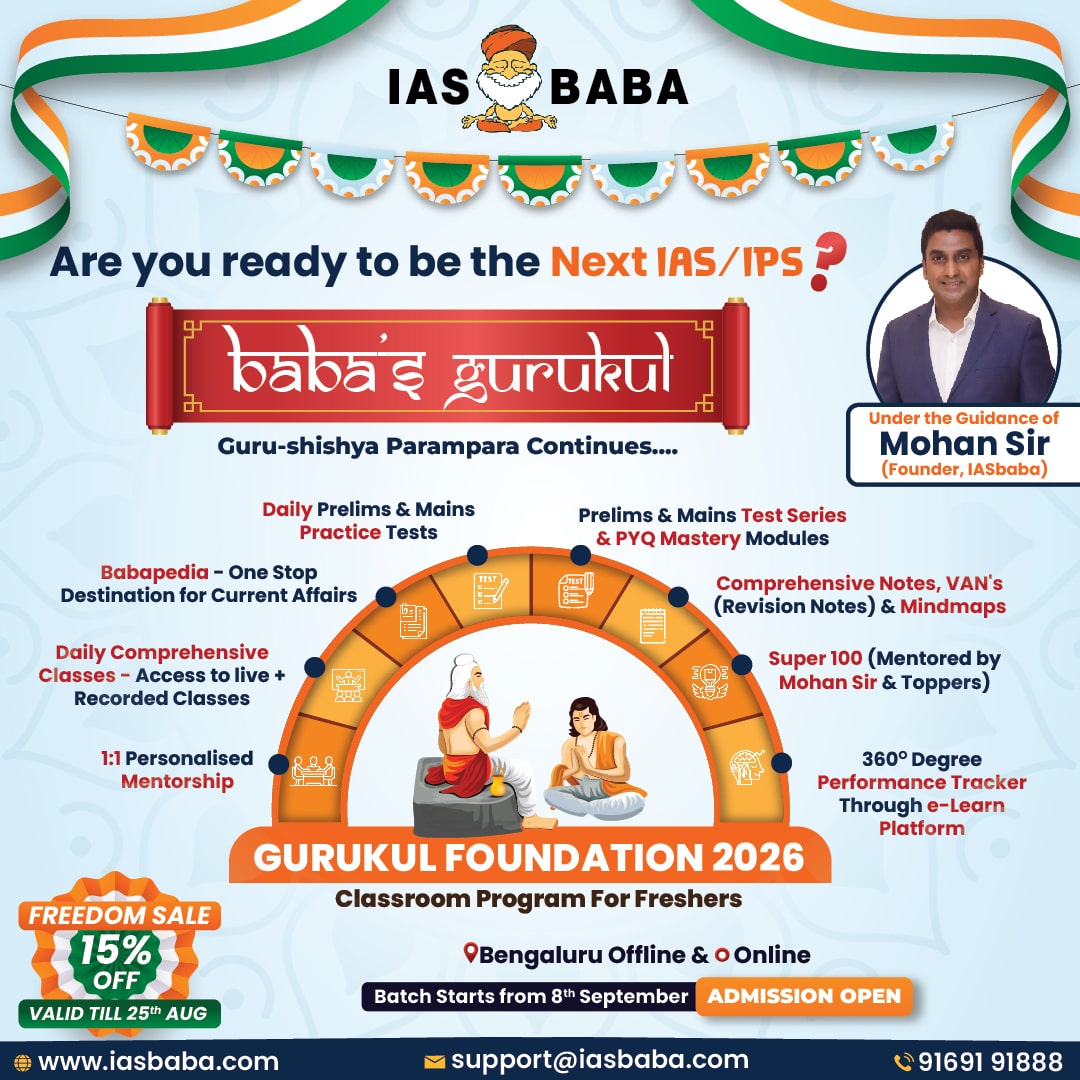IASbaba's Think and Learn-Mains 2015, Mains Examination, Think and Learn-2015, UPSC Mains- Think and Learn-2015
Archives-Think and Learn-Mains 2015
Synopsis and Review-Think and Learn [Day 5]
1) Critically analyze the condition of women in Ancient India. How was it different from the conditions in medieval and modern times? (200 Words, 10 Marks)
The question asks for “critical analysis”, so we need to give both positives and negatives throughout the ancient, medieval and modern history.
Starting with the Harappan culture, and mentioning the dancing girl figurine, through the Vedic age, the advent of Manusmriti, practices like Sati etc., till the rise of the social reformers like Raja Ram Mohan Roy should be sufficient for this answer.
So, since this is a historical question, with not many new/varied points, IASBaba will give the Top Answer as the Model Answer.
Today’s Top Answer goes to – Manan, for including all the points. Every other answer missed out on atleast one point.
Ans) Though we are still to fully decipher the script of INDUS VALLEY civilization, archaeological findings like that of the MOTHER GODDESS point to the fact that women were given importance. Even in the RIGVEDIC AGE, the position of women was good. Women participitated in the meetings of sabha,were considered important for the performance of rituals like yajnas etc. There have been no instances of gender segregation found relating to the RIGVEDA AGE. GAYATRI MANTRA was dedicated to the godess of dawn.
The position of women comparatively declined in the LATER VEDIC AGE. Their presence in the rituals was no longer considered necessary.Society became increasingly male-dominated.But still their position was far better than in the medieval age in the MEDIEVAL AGE, the position of women declined considerably.Though the practice of sati can be traced back to the ancient Gupta period,it became more frequent in the medieval age.Purdah system was in vogue.Women were not considered as able as men as is evident from the life and times of RAZIA SULTANA as well.This went on TILL modern AGE when people LIKE RAJA RAMMOHUN ROY,ISHWARCHANDRA VIDYASAGAR etc worked for the upliftment of women.Girls now started getting admission in modern schools .MAHATAMA GANDHI also worked a lot for women empowerment in his “constructive programmes” and also during the phase of struggle. WOMEN like USHA MEHTA,SAROJINI NAIDU ETC contributed immensely.
IN THE PRESENT times the position of women is improving .Women are being given equal importance as men but still there are many problems.Some households are still conservative.Problems of foeticide,infanticide, sexual harassment at work place still continue.BUT OVERALL POSITION IS IMPROVING .tHERE HAVE BEEN MANY GOVERNMENTAL AND NON-GOVT EFFORTS to address these issues so as to truly ACHIEVE the ideals of EQUALITY,SOCIAL JUSTICE AND LIBERTY for all as enshrined in our CONSTITUTION.
2) “The conditions which necessitated the formulation and adoption of CSS don’t exist anymore”. Comment. Also discuss the factors that led to failure/ limited success of CSS. What modifications would you suggest for making CSS more result oriented?
The question has been framed out of an article in LIVE mint…..The purpose of giving this question was to show you how questions can be framed out of an article and how it can be processed to frame the answer. As you would see subsequently that by merely rearranging the content of the article, a logical answer to the given question can be framed. You can adopt the same strategy while you read newspapers. This will reduce your efforts and streamline your thought process. Before you actually start reading the synopsis, go through this article:
http://www.livemint.com/Opinion/3yGB9NCwIvxFoiCKMjo42L/Unshackling-centrally-sponsored-schemes.html
CSS came into being in the late 1960’s when India was a weak and underdeveloped economy. State governments did not have the financial resources and the expertise to run ambitious schemes. At that time, there was a rationale to these schemes: matters of national policy such as family planning and resettlement of landless agricultural labourers required the intervention of the Union government. Since then, state governments have acquired a degree of expertise and many states have formulated and successfully implemented schemes related to the social sector. Moreover, after the recommendations of the 14th Finance Commission—which gave an unprecedented share of tax revenues to the states—state governments have the resources they need to do what they want to.
Factors that led to failure of these schemes: At the core of the failures of these schemes, there are three interlinked factors.
- One, it makes little sense for the Union government to provide goods and services that are best provided by state governments. In sectors such as agriculture, education and health, among others, knowledge of local conditions is important for the success of any scheme or project. Crafting these schemes centrally is of limited use.
- Two, estimating the money required for the success of these projects requires a great degree of coordination with state governments. Simply asking for inputs and then allocating money on the basis of unworkable formula can’t be successful.
- Third, there is lack of proper monitoring and regular assessment of these schemes as a result of which Technology Mission on Cotton, National Bamboo Mission and host of other schemes couldn’t yield expected results.
Steps that can be taken to wrt CSS:
- First, a reduction in the number of centrally sponsored schemes, or CSS, has to be agreed upon.
- Second, these schemes should to be divided into core and optional schemes. Core schemes should be backed by Parliamentary legislation. Further, core schemes should have a funding pattern of 60:40
- Third, it is time to revisit the original rationale for launching CSS: the Union government funding and implementing schemes that reflect national priorities and goals. These are largely in areas such as the power and infrastructure sectors. Projects in these areas are capital-intensive and require coordination among a number of states, a role the Union government is capable of performing.
- Fourth, the money saved from these schemes should be handed over to the states, in consultation with NITI Aayog and individual state governments.
The Top Answer for this question is given by – Santosh Venkatesh
Ans) Centrally sponsored schemes have their origins immediately after independence where India was weak and underdeveloped .The states had limited expertise and resources to achieve over all National objectives such as family planning and hence intervention of centre was required.
But the CSS have had limited success due to gaps at formulation and implementation stages such as
1) One size fits all approach: Each state has different socioeconomic scenario and thereby have different Priorities.
2) The Imposition of mandatory requirement on financially weaker states.
3) Limited flexibility for states in implementing these schemes
With State government having gained sufficient expertise in social sector development it is time to relook
at CSS as suggested by Chaturvedi committee on restructuring CSS.
Some measures to improve efficiency and effectiveness of CSS are
1) Reducing and categorising CSS schemes as core and optional based on national priorities
2) Consultation with states at Design, formulation and implementation stages.
3) CSS should now focus on Capital intensive sectors such as infrastructure and power where coordination among many states is required.
With NITI Aayog Focussing on cooperative federalism there is hope that states will have a greater say in the planning and formulation of CSS thereby addressing gaps in design, implentation and effectiveness of the CSS.
3) Explain the following terms along with their applications:
- Mobile wallet
- b. Near Field Communication, NFC
A mobile wallet allows a person to exchange physical cash for virtual money, which is stored on the network and is accessed through mobile phones. Virtual money can be used to purchase or pay for various goods at specific merchants who accept this form of payment. Technologies enable such transactions to happen through SMS, bluetooth, through a built in bar code reader application in phones or even through direct communication between the phone and the card reader at the merchant organization. All that the mobile user would need to do is pay cash to the mobile wallet provider to load his/her phone with credit and then use the virtual money for buying things at shops that accept mobile payments.
Near field communication, abbreviated NFC, is a form of contactless communication between devices like smartphones or tablets. Contactless communication allows a user to wave the smartphone over a NFC compatible device to send information without needing to touch the devices together or go through multiple steps setting up a connection. NFC is becoming a popular payment and data communication method.
The technology behind NFC allows a device, known as a reader to create a radio frequency current that communicates with another NFC compatible device or a small NFC tag holding the information the reader wants. Both businesses and individuals benefit from near field communication technology. By integrating credit cards, metro tickets, and paper coupons all into one device, a customer can board a train, pay for groceries, redeem coupons or store loyalty points, and even exchange contact information all with the wave of a smartphone. Faster transaction times mean less waiting in line and happier customers. Fewer physical cards to carry around means the customer is less likely to lose one or have it stolen.
The Top Answer for this question is written by – Manish Srivastava
Mobile Wallet Technology:- Customed adaption of Smart phones & mobile technology has increased rapidly. Different plateforms like Android, IOS provided developers a lot of convenience to develop user friendly application. Mobile wallet is an example of it.
Mobile wallet works on Near Field Communication(NFC) Technology.In that manufacturer provides a NFC chip inside smart phones. Now when a smart phone user wants to make payment with his/her phone, he/she opens the application like Google wallet, ISIS, Softcard and tap it with enabled payment terminal.
Benefits of MWT:-
1) Faster Payments keep customer happy.
2) Handling less cash
3) Much secure as payment method stays with customer
Near Field Communication:- NFC is a technology to transfer data from a smart phone to any other device with help of radio communication within a short distance. RFID chips are used in NFC communication.It converts data into particular radio frequency and transmit it.
Benefits of NFC:-
1) Faster communication as compare to bluetooth & infrared.
2) It can communicate with multiple device at a time.
3) Much secure
4) No peer to peer communication
Disadvantages:-
1) Short range less than 10 c.m.
4) You are the CEO of a reputed company. Under your leadership, the company has grown manifold and profits have gone up exponentially. However, the last 2-3 quarters have not been particularly good for your company. Losses have been incurred, share prices have fallen and as a result investors’ attitude towards your company is not favorable. Stakeholders are asking for your immediate resignation. Under these circumstances you are disillusioned by the behavior of the same people who were all appreciative of you in the good old days but are now hell bent on blaming the entire failure on you. What options do you have under such circumstances? which option would you opt for? Substantiate.
This question relates to the concepts of leadership and attitude. You must have read reports about the criticism that the current ODI captain of India MS Dhoni was subjected to after getting defeated by Bangladesh in an ODI series. Critics even demanded that he step down as the captain of the team.
The question simply converts the situation into a corporate set up to test your attitude and judge your leadership qualities. Now, this question may have many answers and therefore we refrain from giving you a model answer or any solution. However, we provide you with some points to ponder upon that will help you in approaching similar questions in the future:
- Which traits are being tested here?
- Should a true leader ever quit?
- What does criticism do to you? Does it make you stronger or makes you nervous?
- How do you communicate your stand to the people and subject yourself to scrutiny?
- Which strands of corporate governance are involved here?
- Can you think of any example where in a similar situation a CEO refused to quit and later turned the fortune of the company for good? How this example can be used to substantiate your answer?
The Top Answer for this question is given by – Udtapanchi
The above case study deals with issues coming when the company is not meeting the expectations of many stakeholders. The ceo of the company ,being the leader has to face the brunt on this. The options available with CEO are
1) Whether to resign due to unfavourable attitude in company against me
2) Whether to continue ignoring criticism
3) Researching and communicate the reality about the company
Option 1-
Merit- the resignation is easiest step to do. It shows the responsibility, accountability ,integrity of me in front of the stakeholders.
Demerit- Mere giving resignation without solving problem is a firefighting mechanism.Consequential ethics guide that it wont serve the real purpose of the opposition. Further it reflect escapist attitude on my part which would prove detrimental for me in my future.
Option 2
Merit- to continue despite criticism , reflect internal strength of mine. The deontological ethics guide me towards my duty not to external world but to myself and my values of professionalism,honesty ,selflessness
Demerit- It would give rise to unresponsive culture in company
Option-3 –
Merit- Communicating the reality ,though would bring change in emotions and attitude of the stakeholders ,it would also make them more solution oriented
Demerit- the shock value may lead to further decline in share prices of the company
Option -3 seems more appropriate under given circumstances as people are less interested much in my resignation but more in holding someone responsible. There criticism is coming out of ignorance of the reasons for company non-performance in last two quarter despite having good performance in earlier years.
At this point of time, I should use emotional intelligence and allay the concerns of employees and other staff members.
Further, I should probe the reason for the poor performance in last 2 quarter and effectively communicate it to the stakeholders by holding meeting, through Emails,Newspaper and so on.
I should lay down a credible strategy to overcome the problems in front of the stakeholders and convince them to continue repose trust in me and company so as to have long-term benefits.














